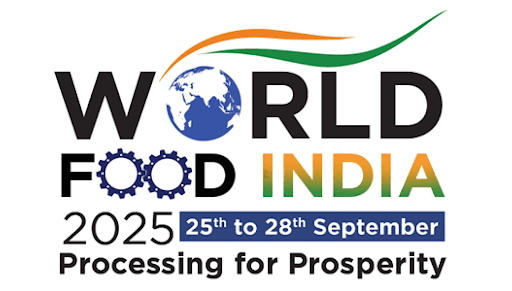Description
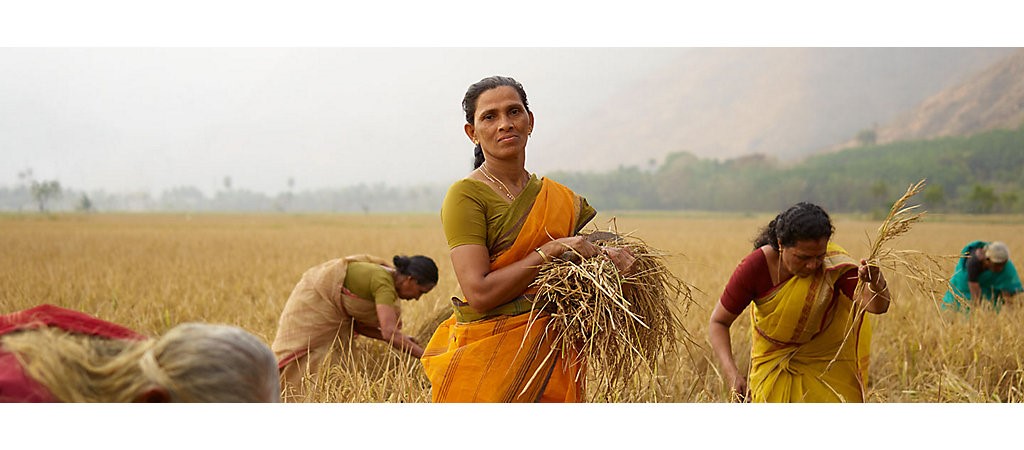
Disclaimer: Copyright infringement not intended.
Context
- The Centre has created a National Farmers’ Database with records of 5.5 crore farmers.
Details
- The national database was created by taking data from existing national schemes such as PM-KISAN, soil health cards and the insurance scheme PM Fasal Bima Yojna.
- With the help of State governments, a total of eight crore farmers would be included by the end of the year.
- The Government urged states to study the Karnataka model for digital agriculture presented at the conference.
Significance
- The database could be used for targeted service delivery with higher efficiency and in a focussed & time bound manner.
- It was the core for the proposed Agristack digital agriculture ecosystem.
- Already, companies like Microsoft, Amazon and Patanjali had been asked to develop technology solutions for farmers using data from the database.
PM KISAN
- Under the PM-KISAN scheme, the government is providing ₹6,000 in three equal installments to 14 crore farmers annually.
- The amount is directly transferred into the bank accounts of the beneficiaries through direct benefit transfer (DBT) mode.
- An amount of over ₹15 lakh crore has been transferred to farmer beneficiaries so far under the PM-KISAN scheme, launched on February 24, 2019.
- The scheme defines family as husband, wife and minor children. The fund of Rs 2,000 is directly transferred to the bank accounts of the farmers/farmer's family.
Who is eligible for PM Kisan scheme?
- Landholding farmers’ families with cultivable landholding in their names can apply under this scheme
- Farmers from both the urban and rural areas
- Small and marginal farmers families
Who is not eligible for PM Kisan scheme?
- Institutional landholders
- Present or retired officers and employees of state/central government as well as PSUs and government autonomous bodies.
- Beneficiaries with higher economic status are not eligible.
- Those who pay income tax
- Farmer families holding constitutional posts
- Professionals like doctors, engineers and lawyers
- Retired pensioners with a monthly pension of over Rs 10,000
Soil Health Card
- Soil Health Card (SHC) is a Government of India’s scheme promoted by the Department of Agriculture & Co-operation under the Ministry of Agriculture and Farmers' Welfare.
- It is being implemented through the Department of Agriculture of all the State and Union Territory Governments.
- A SHC is meant to give each farmer soil nutrient status of his/her holding and advice him/her on the dosage of fertilizers.
- SHC is a printed report that a farmer will be handed over for each of his holdings.
- It contains the status of his soil with respect to 12 parameters, namely N,P,K (Macro-nutrients) ; S (Secondary- nutrient) ; Zn, Fe, Cu, Mn, Bo (Micro - nutrients) ; and pH, EC, OC (Physical parameters).
- Based on this, the SHC indicates fertilizer recommendations and soil amendment required for the farm.
- It is available once in a cycle of 2 years, which indicates the status of soil health of a farmer’s holding for that particular period.
About PMFBY
- The Pradhan Mantri Fasal Bima Yojana (PMFBY) launched in 2016 is an insurance service for farmers for their yields.
- It was formulated in line with One Nation–One Scheme
- It aims to reduce the premium burden on farmers and ensure early settlement of crop assurance claim for the full insured sum.
- PMFBY aims to provide a comprehensive insurance cover against failure of the crop thus helping in stabilising the income of the farmers.
- The Scheme covers all Food & Oilseeds crops and Annual Commercial/Horticultural Crops for which past yield datais available. The scheme is implemented by empanelled general insurance companies.
- Selection of Implementing Agency (IA) is done by the concerned State Governmentthrough bidding.
- The scheme is compulsory for loanee farmers availing Crop Loan /KCC account for notified crops and voluntary for other others.The scheme is being administered by Ministry of Agriculture.
- Premium:The prescribed premium is 2% to be paid by farmers for all Kharif crops and 1.5% for all rabi crops.
- In the case of annual commercial and horticultural crops, the premium is 5%.
- Premium cost over and above the farmer share was equally subsidized by States and GoI.
- However, central government shared 90% of the premium subsidy for North Eastern States to promote the uptake in the region.
PMFBY 2.0
- The central government had revamped PMFBY in the 2020 Kharif season. Features are:
- Enrolment is 100% voluntaryfor all farmers from 2020 Kharif.
- Centre’s premium subsidy:30% for unirrigated areas/crops and 25% for irrigated areas/crops.
- States/UTs have option to select any number of additional risk covers/features.
- Insurance companies have to now spend 0.5% of the total premium collected on information, education and communication (IEC) activities.
APMC and Karnataka Model
- An Agricultural Produce Market Committee (APMC) is a marketing board established by state governments in India to ensure farmers are safeguarded from exploitation by large retailers, as well as ensuring the farm to retail price spread does not reach excessively high levels.
- APMCs are regulated by states through their adoption of a Agriculture Produce Marketing Regulation (APMR)
Features of APMC
- Facilitating contract farming model.
- Special market for perishables
- Allowing farmers and private persons to set up their own market.
- Relaxation of licensing norms.
- Single market fee
- APMC revenue to be used for improving market infrastructure.
Note: However, not all states have passed the bill. Some states have passed but neither framed rules nor notified it. Thus, inter-state barriers continue.
Shortcomings in APMC system
- The rates of commodities started varying in every region all across India, leading rates to be highly fragmented.
- Fees of trading in APMC went high.
- There is a limited number of APMC mandis which leads to insufficient market options for farmers to sell their produce.
- Even after imposing and collecting high fees, the infrastructure of the APMC was inadequate and lead to a high wastage of harvests.
- As it was mandatory for agents/middle man in APMC to have a license, there were limited agents with whom farmers can sell their produce which prompted less income for farmers.
- Monopoly of APMC
- Cartelization
- High Commission, taxes and levies on farmers by APMCs
- Blockage of payment to farmers by agents and arhatiyas (middlemen).
- Entry Barriers – License fee in these markets are highly prohibitive.
- Politicization of APMCs
Karnataka Model
- Of all the APMC (agricultural produce market committee) reforms in India, Karnataka’s Rashtriya eMarket Services Pvt. Ltd, or ReMS, has been arguably the most popular one.
- To put it simply, Karnataka took the mandi (farmers’ market) system to the virtual world when it set up ReMS as a joint venture between the state government and NCDEX e Markets Ltd or NeML (formerly NCDEX Spot Exchange Ltd).
- ReMS integrated online APMCs across Karnataka through a single licensing system.
- This has created what the state calls a unified market platform (UMP).
- UMP helps farmers in discovering the best prices for their produce.
- In the e-mandi system, the farmer gets a unique licence number and instead of using a chit for bidding, he can view the lot online and decide whether he is okay with the price.
- This helps the farmers to get a better price because they can see rates in other APMCs too.
- National Agriculture Market (e-NAM) at national level was inspired from ReMS.
Recent Reforms at National Level
- Until 2020, the first sale of agriculture produce could occur only at the market yards (mandis) of APMCs.
- However, after 2020 the passing of the Farmers’ Produce Trade and Commerce (Promotion and Facilitation)Act, allowed farmers to sell outside APMC mandis as well as across different states of India.
The Acts
- The Farmers' Produce Trade and Commerce (Promotion and Facilitation) Act
- The Farmers (Empowerment and Protection) Agreement on Price Assurance and Farm Services Act; and
- The Essential Commodities Amendment Act' under which the monopoly of middlemen in APMCs is sought to be abolished and move towards creation of a free market.
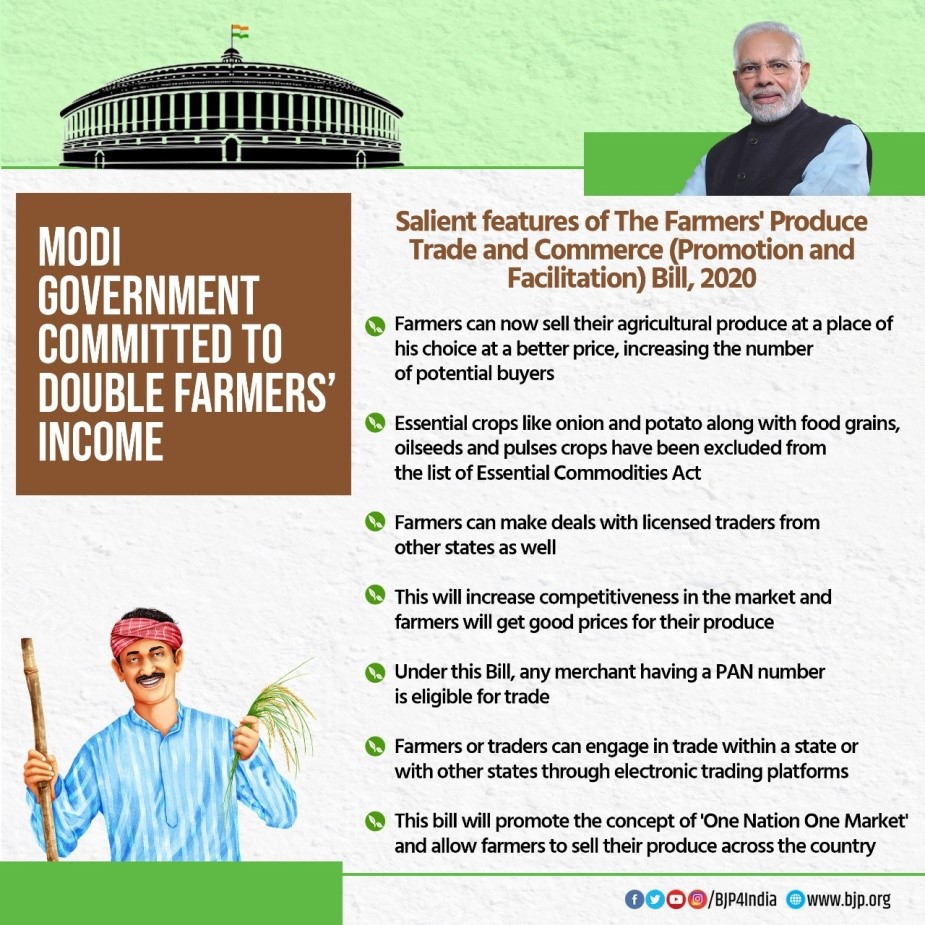
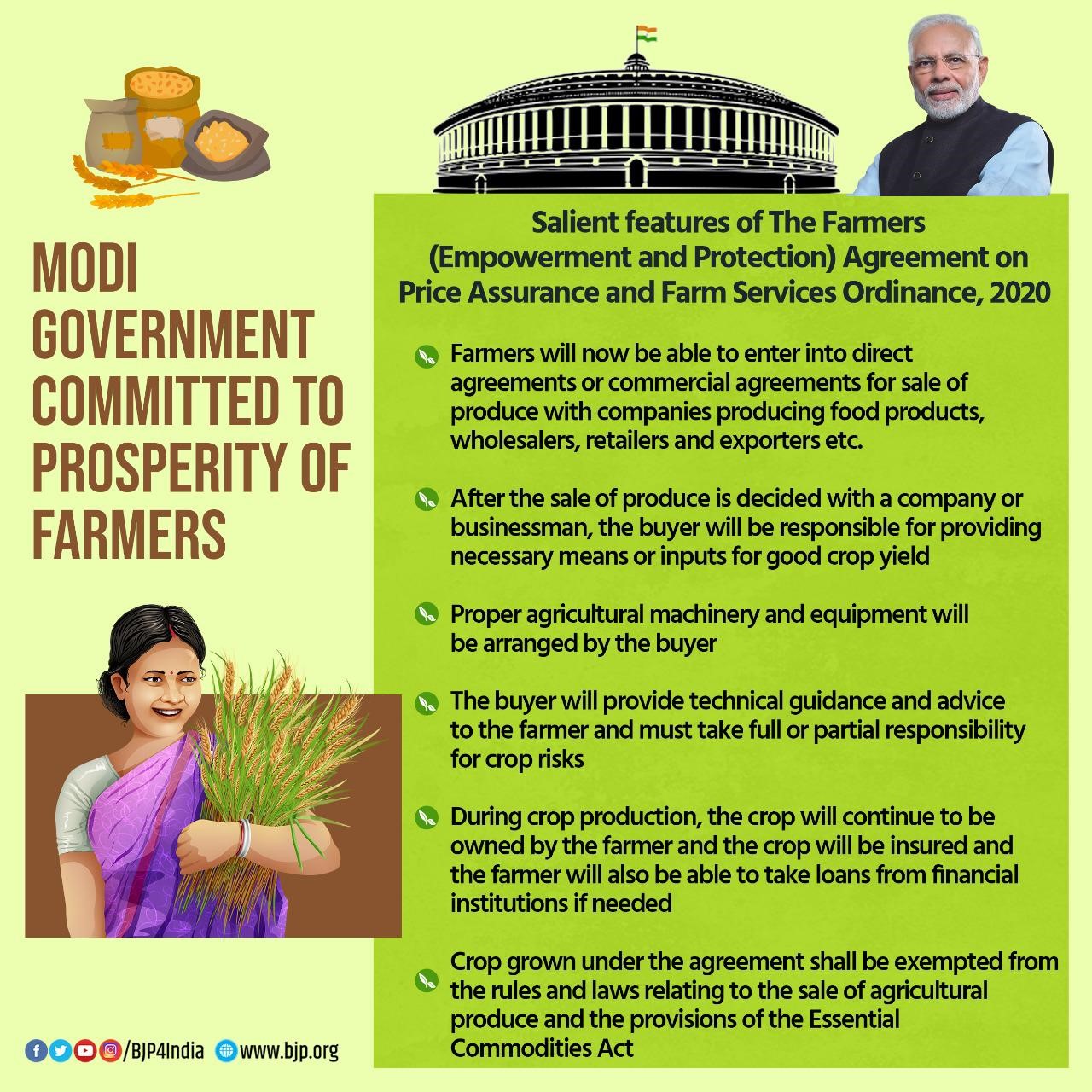
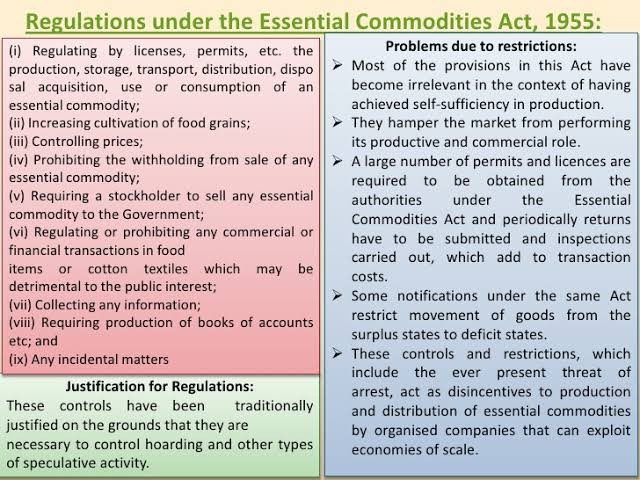
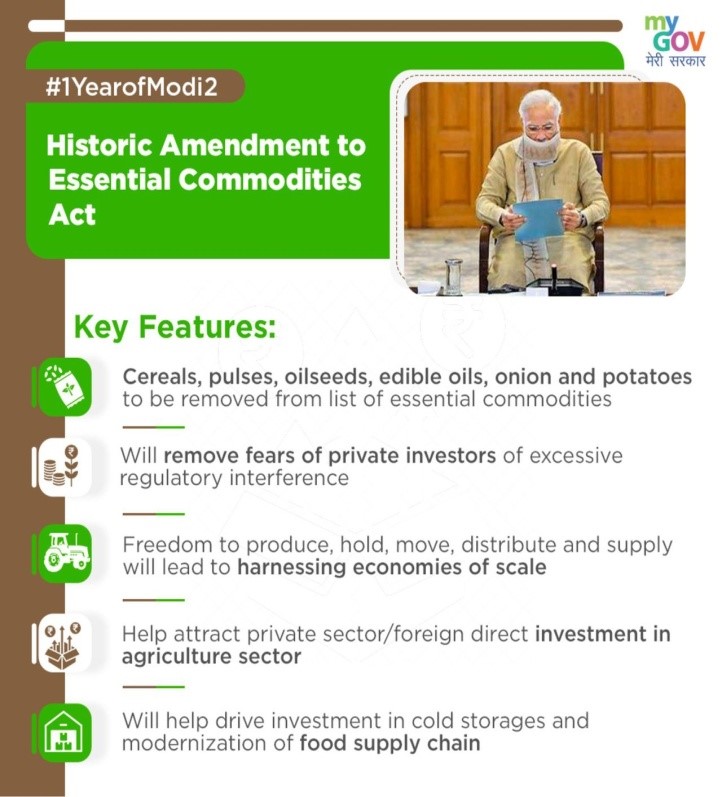
Essential Commodities (Amendment) Ordinance, 2020
- It amends the Essential Commodities Act, 1955.
- The Ordinance seeks to increase competition in the agriculture sector and enhance farmers’ income.
- It aims to liberalize the regulatory system while protecting the interests of consumers.
Regulation of food items
- The Act empowers the central government to designate certain commodities (such as food items, fertilizers, and petroleum products) as esse ntial commodities.
- The central government may regulate or prohibit the production, supply, distribution, trade, and commerce of such essential commodities.
- The central govern ment may regulate the supply of certain food items including cereals, pulses, potato, onions, edible oilseeds, and oils, only under extraordinary circumstances.
- These include: (i) war, (ii) famine, (iii) extraordinary price rise and (iv) natural calamity of grave nature.
Imposition of stock limit
- The Act empowers the central government to regulate the stock of an essential commodity that a person can hold.
- The Ordinance requires that imposition of any stock limit on certain specified items must be based on price rise.
- A stock limit may be imposed only if there is:
- 100% increase in retail price of horticultural produce; and
- 50% increase in the retail price of non-perishable agricultural food items.
- The increase will be calculated over the price prevailing immediately preceding twelve months, or the average retail price of the last five years, whichever is lower.
- The Ordinance provides that any stock limit will not apply if stock held by such person is less than the:
- i) overall ceiling of installed capacity of processing, or
(ii) demand for export in case of an exporter.
|
Note: The provisions of the Ordinance regarding the regulation of food items and the imposition of stock limits will not apply to any government order relating to the Public Distribution System or the Targeted Public Distribution System.
|
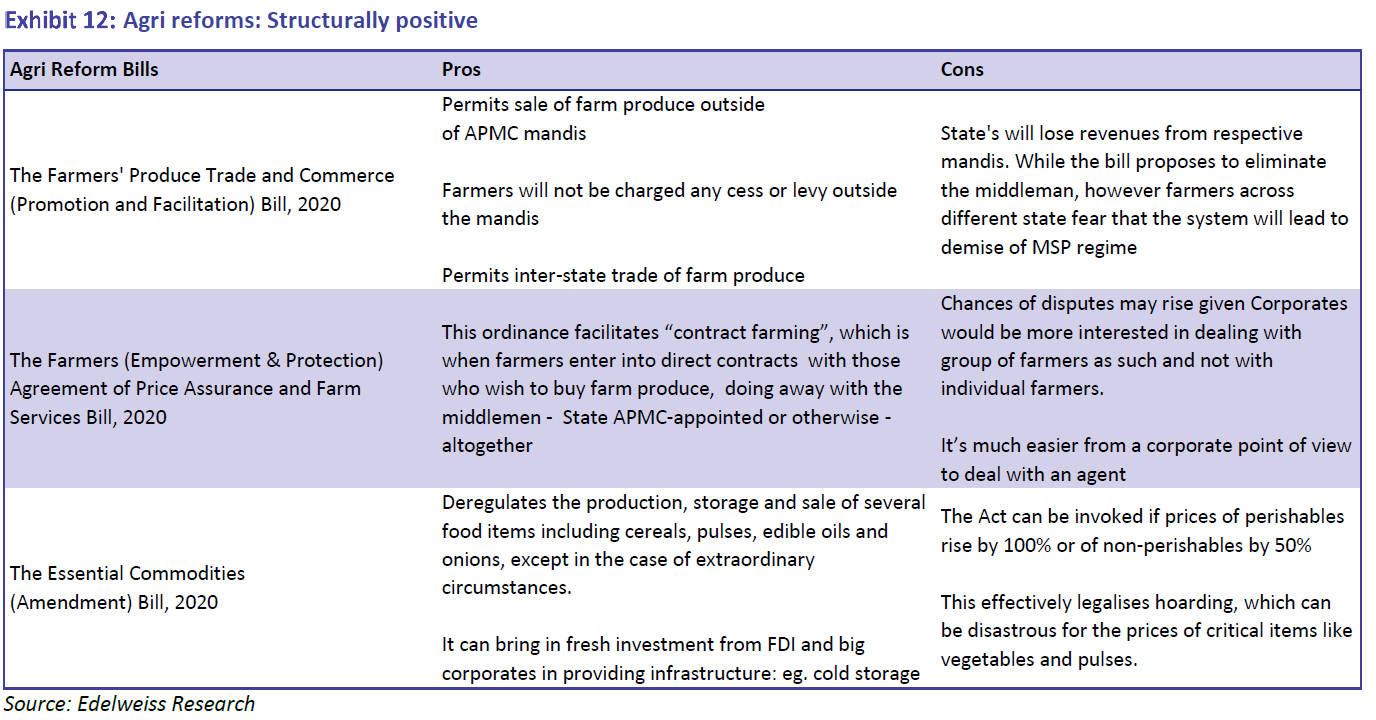
Conclusion
- The Exclusion of middlemen benefits farmers only when they have a well-formed infrastructure like markets, arduous storage facilities, electricity supply, and a link to food processing companies who could compete to buy their produce.
- The government should also provide statutory backing to the MSP and government procurement in order to counter the insecurities of farmers.
- The new Acts have the potential to improve farm incomes, attracts investment and technology.
- They may prove to be revolutionary but the government needs to address farmers’ concerns and put an end to their uncertainties.
https://www.thehindu.com/news/national/national-database-created-with-records-of-55-cr-farmers/article36327616.ece










